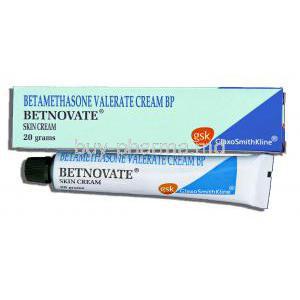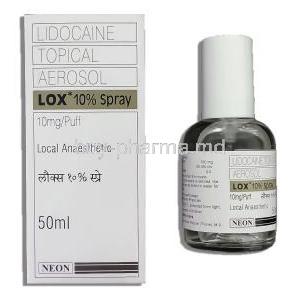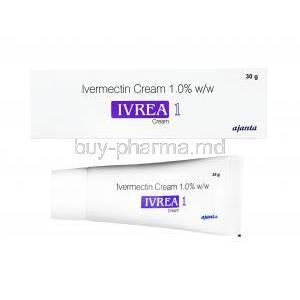Clobetasol Topical
- 1. Introduction
- 2. Composition of Clobetasol Topical
- 3. Uses of Clobetasol Topical
- 4. Off-Label Uses of Clobetasol
- 5. How Clobetasol Topical Works
- 6. Dosage and Administration
- 7. Administration Details for Specific Populations
- 8. Side Effects of Clobetasol Topical
- 9. Important Precautions
- 10. Interactions with Other Medications
- 11. Warnings and Contraindications
- 12. Handling and Storage of Clobetasol Topical
- 13. Overdose and Emergency Management
- 14. Careful Administration
- 15. Handling Precautions
1. Introduction
Clobetasol Topical Overview: Clobetasol propionate, a corticosteroid, plays a crucial role in dermatology treatments. Its effectiveness stems from its anti-inflammatory, anti-itch, and blood vessel-constricting properties. Significance in dermatology care: Dermatologists often recommend Clobetasol Topical for its ability to improve skin conditions, ultimately improving the well-being of those affected.
2. Composition of Clobetasol Topical
Key components and their roles: The main active component, clobetasol propionate, reduces inflammation, relieves itching by lowering cytokine levels, and blocks allergic reactions. Varieties of this treatment come in the form of ointments, creams, gels, and shampoos, providing patients with a range of choices based on their requirements and preferences.

3. Uses of Clobetasol Topical
Main reasons, for usage;
4. Off-Label Uses of Clobetasol
- Lesser Known Skin Conditions: Research indicates that clobetasol may be beneficial in treating other skin conditions beyond its approved uses. These include:
- Vitiligo: Clobetasol has been investigated for its potential role in vitiligo management.
- Alopecia Areata: Some studies suggest its effectiveness in reducing inflammation associated with alopecia areata, a condition causing hair loss.
- Caution: However, caution is advised when using clobetasol off-label. Adverse effects and potential risks should be considered23.
5. How Clobetasol Topical Works
Clobetasol propionate works by engaging with receptors in the cytoplasm and ultimately blocking inflammatory mediators like phospholipase A2, which play a crucial role in causing skin inflammation. As a result of this interaction, there is a reduction in swelling, redness, and itchiness, which greatly improves the patient's skin condition and alleviates their discomfort.
6. Dosage and Administration
Dosage instructions to follow: It is important to use clobetasol, applying it no more than twice a day and not for more than two weeks without medical advice. When applying the medication, make sure to rub it into the affected areas without covering them unless instructed otherwise by a healthcare professional.
Treatment length: The duration of treatment varies based on how your body responds and the severity of your condition. It is best to keep the treatment period short as possible to reduce the likelihood of side effects.
7. Administration Details for Specific Populations
a. Administration to Elderly
Due to the heightened vulnerability to absorption throughout the body and potential systemic side effects, it is essential to consider factors and make appropriate dosage modifications.
b. Administration to Pregnant Women and Nursing Mothers
Safety while pregnant or breastfeeding has not been confirmed. It is advisable to proceed if the benefits outweigh the risks to the unborn child or nursing baby.
c. Administration to Children
When giving medication to children, it's important to be mindful of the dosage and how long they take it since kids are more susceptible to potentially harmful effects throughout their bodies.
8. Side Effects of Clobetasol Topical
a. Common Side Effects
Common side effects often seen are redness, flaky skin, and a burning feeling where the product is applied.

b. Severe Side Effects
9. Important Precautions
Monitoring and Managing Side Effects
When to Seek Medical Attention
10. Interactions with Other Medications
Potential Drug Interactions
Clobetasol Topical might interact with prescribed medications, particularly other topical corticosteroids. It may also impact the absorption or efficacy of drugs processed by the liver. Patients should inform their healthcare provider about all the medications they are currently taking to avoid negative interactions.

Interaction with Over-the-Counter Products
Over the counter medications, supplements and even natural remedies have the potential to interact with clobetasol. It is important to be cautious when using products that contain corticosteroids or are meant for skin conditions as they could increase effects or lessen the effectiveness of the treatment.
11. Warnings and Contraindications
Conditions Under Which Clobetasol Should Not Be Used
Allergic Reactions and Hypersensitivity
If you develop skin irritations like dermatitis rash or swelling in an area it might be necessary to stop the treatment. In cases it's important for patients, with these symptoms to reach out to their healthcare provider without delay.
12. Handling and Storage of Clobetasol Topical
Proper Storage Conditions
To ensure that Clobetasol Topical remains effective and lasts long, it is important to store it in a dry place at room temperature. Keeping the container sealed when not in use is crucial to avoid contamination or breakdown of the active components.
Disposal of Expired or Unused Products
Make sure to dispose of any unnecessary clobetasol products correctly to prevent accidental exposure. It's best to seek advice from a pharmacist or local waste disposal service on disposal methods that adhere to local regulations.
13. Overdose and Emergency Management
Signs of Overdose
Experiencing an overdose of Clobetasol Topical is uncommon but possible, particularly when used excessively or for periods. Symptoms to watch out for include hypercortisolism and adrenal suppression. In these cases the chances of the drug being absorbed into the system increase.
Steps for Immediate Care
If you think there might be an overdose, stop taking the medication and seek medical help right away. The treatment will mainly involve addressing symptoms and providing support, which may include checking hormone levels and making adjustments to therapy.
14. Careful Administration
Guidelines for Safe Use
Patients need to be advised to use Clobetasol Topical on affected areas strictly following the prescribed amount and timeframe. It's important to avoid applying it on regions like the face, underarms, or groin area, unless specifically instructed by a healthcare professional.
Avoiding Common Mistakes During Application
Typical mistakes consist of usage, improper application methods and applying it on areas not recommended. These errors can be reduced through patient education and consistent supervision by medical professionals.
15. Handling Precautions
Personal Safety Measures During Application
Remember to wash your hands and, after using Clobetasol Topical avoid transferring the medication to different body parts or other people.
Preventing Accidental Exposure
1 . Generic Temovate Clobetasol Treating Skin Inflammation
2 . Generic Temovate Clobetasol: An Effective Treatment in Skin Inflammation
3 . Generic Temovate Clobetasol in Treatment of Skin Problems
4 . What is Temovate (clobetasol topical)?
5 . Generic Temovate Clobetasol in Brief
6 . Purposeful Facts on Generic Temovate Clobetasol
7 . Generic Temovate Clobetasol Preventing Skin Irritation
8 . Generic Temovate Clobetasol and Its Usage
9 . A Comprehensive Knowledge on Generic Temovate Clobetasol

































